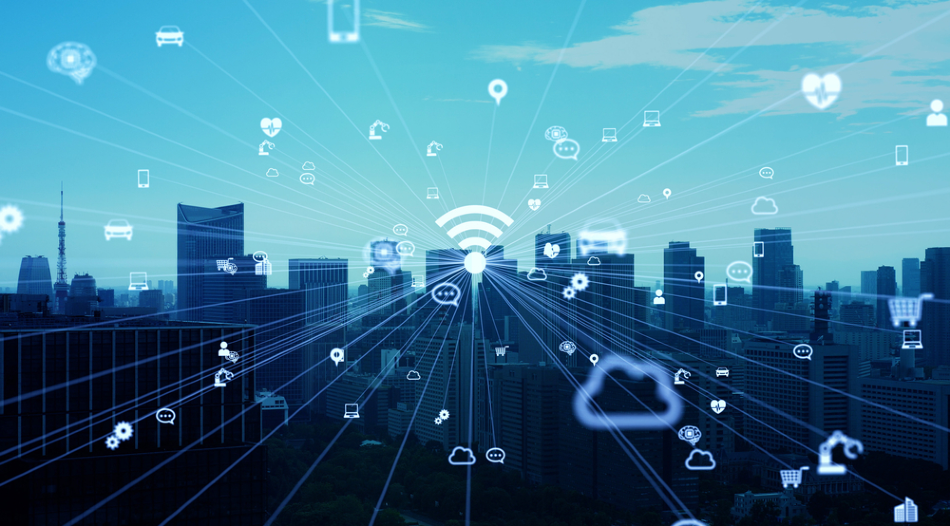
Image Credit: metamorworks/Shutterstock.com
With consumers becoming increasingly more mindful of their influence on the global environment, the call for more sustainable goods and services is greater than ever before.
In the United Kingdom, a company called Honest Mobile recently announced the debut of the UK's first carbon-neutral mobile network. Through emissions offsetting reforestation, the company said it can essentially provide carbon-neutral calls, texts and data. Honest Mobile stated that it will commit 1% of its revenue to reforestation. In the company’s app, customers can see how many trees Honest Mobile has planted on their behalf.
The wireless communications industry is not the first industry that comes to mind when people talk about emissions or increased sustainability, but actually, it does represent a significant share of global carbon emissions. According to research published by mobile phone maker Ericsson, the overall telecommunications industry accounts for about 1.4% of emissions worldwide. By comparison, the aviation industry generates 2% of all global carbon emissions.
In total, personal devices make up the biggest share of the telecommunications industry’s carbon footprint. About 50% of device-related emissions are associated with usage and the other 50% is associated with device life cycle. Networks and data centers account for the next biggest emission shares in the telecom industry.
Though people and their devices have comprised the majority of wireless communications, the growth of automation and the Internet of Things (IoT) will probably drive the rapid expansion of data networks. The amount of people using wireless networks is projected to develop at a linear rate, while IoT use is expected to increase exponentially.
Expert predictions have forecasted that internet usage will annually increase by 30-40%. If this comes to pass, there will be 30 times today's internet traffic in just 10 years. This will translate to the telecom industry comprising 60% of global energy use.
Taking into consideration the volume of users and its huge growth rate, the wireless industry has not been very proactive with regard to emissions. However, steps are being taken.
Setting Carbon-Neutral Goals for Wireless
In Europe, the telecommunications sector recently took a big leap forward in dealing with climate change with the debut of a science-based roadmap to scale back the sector's carbon emissions.
The science-based pathway for the European telecom industry consists of emissions reductions for mobile, landline, and data center operations that coincide with the Paris climate accords, which have the main objective of restricting average global temperature increases to less than 1.5°C. This limit is intended to reduce the risks of catastrophic impacts associated with climate change.
One of the first such actions taken by any industry, the emissions reduction targets dovetails with commitments made by the GSM Association (GSMA) trade group that helps the wireless industry attain net-zero emissions by 2050. The emissions reduction target sets downward trajectories over the rest of the decade for each telecom sub-sector. For wireless operators, the goal is to lower emissions by a minimum of 45% through 2030.
A shift to clean and low-carbon energy sources is projected to make up the majority of decreases over this timeframe, together with operators becoming more energy efficient. Usage of renewable energy, which may differ widely according to geographic location, remains an essential factor for an operator’s capacity to meet science-based objectives.
Click here to find out more about different clean technology on the market today
Smart Technology Driving Higher Emissions from the Mobile Industry
According to industry experts, managing emissions from the wireless industry calls for more precise models that take into consideration the data use, energy costs and carbon dioxide generation in networks and other areas of the industry. Current assessment models are significantly flawed, and new models must be better at taking into account differences in equipment and other various factors.
On-going analytics research that is focused on all manner of human and machine interactions is expected to enable smart grid technologies that will include smarter transportation, infrastructure and forecasting across both society and industry verticals. Data insights are likely to speed up the creation of energy-efficient technology and operations. Ironically, the greater use of telecommunications will apply added pressure to adopt greater energy efficiency.
Possibly the largest emissions challenge facing the wireless industry is the need to design eco-friendly and inexpensive networks to allow for exponentially greater flows of information. According to experts, there will be a need to increase network capacity through to 2030 by 1000 fold while at the same time sustaining or reducing energy usage.
Between 2013 and 2015, the European industry group EIT devised an architecture for sustainable 5G networks that exhibited 90% lower power usage is achievable. This was achieved by dividing control and data planes, reducing the control and signaling layer, and implementing dynamic systems operations.
Experts have said that one crucial factor in making progress is the creation and enforcement of wireless standards. While multi-system emissions standards are in their infancy, there are major campaigns underway to develop them.
References and Further Reading
United Nations Climate Change News (2020) Telecoms Sector Agrees Pathway to Net Zero Emissions. [Online] Available at: https://unfccc.int/news/telecoms-sector-agrees-pathway-to-net-zero-emissions (Accessed on 21 September 2020).
Szal, A. (2016) The Increasingly Concerning Carbon Footprint of Information and Telecommunication Technologies. EE World Online. [Online] Available at: https://www.eeworldonline.com/the-increasingly-concerning-carbon-footprint-of-information-and-telecommunication-technologies/ (Accessed on 21 September 2020).
American Chemical Society. (2013) Toward Reducing the Greenhouse Gas Emissions of the Internet and Telecommunications. [Online] Available at: https://phys.org/news/2013-01-greenhouse-gas-emissions-internet-telecommunications.html (Accessed on 21 September 2020).
Ericsson. Exponential Data Growth – Constant ICT Footprints. [Online] Available at: https://www.ericsson.com/en/reports-and-papers/research-papers/the-future-carbon-footprint-of-the-ict-and-em-sectors (Accessed on 21 September 2020).
Disclaimer: The views expressed here are those of the author expressed in their private capacity and do not necessarily represent the views of AZoM.com Limited T/A AZoNetwork the owner and operator of this website. This disclaimer forms part of the Terms and conditions of use of this website.